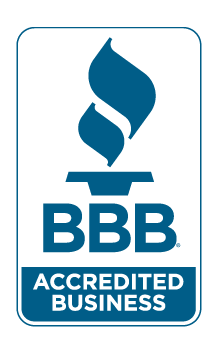Yet, January is when the commissions start hitting for the work you already did. Policies written in the fall go into effect after January 1st, and that’s when many agents finally feel some financial breathing room.
But here’s the hard truth:
For many agents, this is also where momentum dies.
They treat the end of AEP as the end of the year — mentally, emotionally, and strategically. And that mindset quietly sabotages income, growth, and long-term success.
The agents who consistently win don’t do that.
They understand something critical:
The period immediately after AEP is not a slowdown — it’s a pivot point.
Let’s talk about how to finish the year strong, leverage the business you already wrote, and intentionally set yourself up for a more profitable and less stressful 2026.
The Post-AEP Trap Most Agents Fall Into
After months of grinding through enrollments, most agents are exhausted. That’s understandable. AEP and ACA season demand long hours, constant follow-ups, and nonstop problem-solving.
But exhaustion leads to dangerous habits:
- “I’ll deal with life insurance later.”
- “I’ll set goals in January.”
- “I just need a break before I think about what’s next.”
- “These are health clients — I don’t want to bother them.”
What actually happens?
- Warm relationships cool off
- Leads go untouched
- Cross-sell opportunities disappear
- Another year starts without a real plan
The irony is that this is the exact moment when agents are sitting on their best opportunities.
Health Clients Are Not “Just” Health Clients
Every Medicare or ACA client you helped this fall trusted you with an important financial decision.
They:
- Shared personal information
- Talked about doctors, prescriptions, and budgets
- Let you guide them through a confusing process
That trust is gold.
Yet many agents mentally silo these clients as “health only” — missing the bigger picture.
Here’s the reality:
- Most Medicare clients are underinsured in life coverage
- Many ACA clients have families with zero protection
- Almost none have had a real conversation about income replacement, final expenses, or legacy planning
This doesn’t require pressure or aggressive selling.
It requires leadership.
A simple mindset shift changes everything:
“My job isn’t to sell more — it’s to help clients see risks they haven’t considered yet.”
Why Q1 Is the Perfect Time for Life Conversations
January through March is one of the most overlooked windows in this business.
Why it works:
- Policies are active — clients feel settled
- Commissions are starting to hit — agents aren’t desperate
- Clients are thinking about the new year
- Trust is already established
This is where language matters.
You’re not calling to pitch. You’re calling to say:
“Now that your health coverage is active, I want to make sure we didn’t leave any gaps that could hurt your family.”
Simple Ways to Turn Health Relationships into Long-Term Clients
You don’t need complicated funnels or scripts.
You need consistency and intention.
Here are a few high-integrity approaches that work:
1. Post-Enrollment Check-Ins
Reach out 30–60 days after coverage goes live.
Ask:
- “Did your cards arrive?”
- “Any issues with providers or prescriptions?”
- “Is there anything confusing so far?”
Once rapport is re-established, it’s natural to say:
“Part of my job is helping clients protect more than just health. Would you be open to a short conversation to make sure your family is covered if something unexpected happens?”
2. Position Life Insurance as Protection, Not a Product
Avoid jargon. Avoid pressure.
Frame it as:
- Final expenses
- Income replacement
- Mortgage protection
- Spousal security
3. Start With Education, Not Applications
Sometimes the win isn’t a sale — it’s planting a seed.
Those conversations come back months later when trust is already built.
Finishing the Year Strong Is a Mindset, Not a Date
Too many agents mentally shut down in December.
But strong producers understand:
- The calendar doesn’t dictate momentum — habits do
- The year doesn’t end when AEP ends
- Income stability comes from layered products and relationships
If you wait until January to think about goals, you’re already behind.
Setting Real Goals for 2026 (Not Just “Hopeful” Ones)
Instead of vague resolutions, ask yourself real business questions:
- How many active clients do I want by the end of 2026?
- What percentage of my health clients also have life coverage?
- How much recurring income do I want outside of AEP?
- What systems do I need so I’m not starting from scratch every fall?
Then work backward.
Strong goals aren’t motivational posters — they’re measurable plans.
Treat This Like a Business — Because It Is One
Agents who struggle year after year usually aren’t lazy.
They’re unstructured.
They rely on:
- Seasons instead of systems
- Motivation instead of process
- Hope instead of planning
The most successful agents treat their book like an asset — not a hustle.
They:
- Build long-term client relationships
- Track follow-ups
- Think beyond one product or one enrollment window
- Use technology and structure to stay organized
This is how burnout disappears and confidence grows.
The Opportunity Sitting Right in Front of You
If you wrote business during AEP or ACA this year, you already did the hard part.
Now the question is:
Will you let that momentum fade — or will you build on it?
And the agents who understand that aren’t worried about slow seasons — because they don’t have any.
© Copyright







